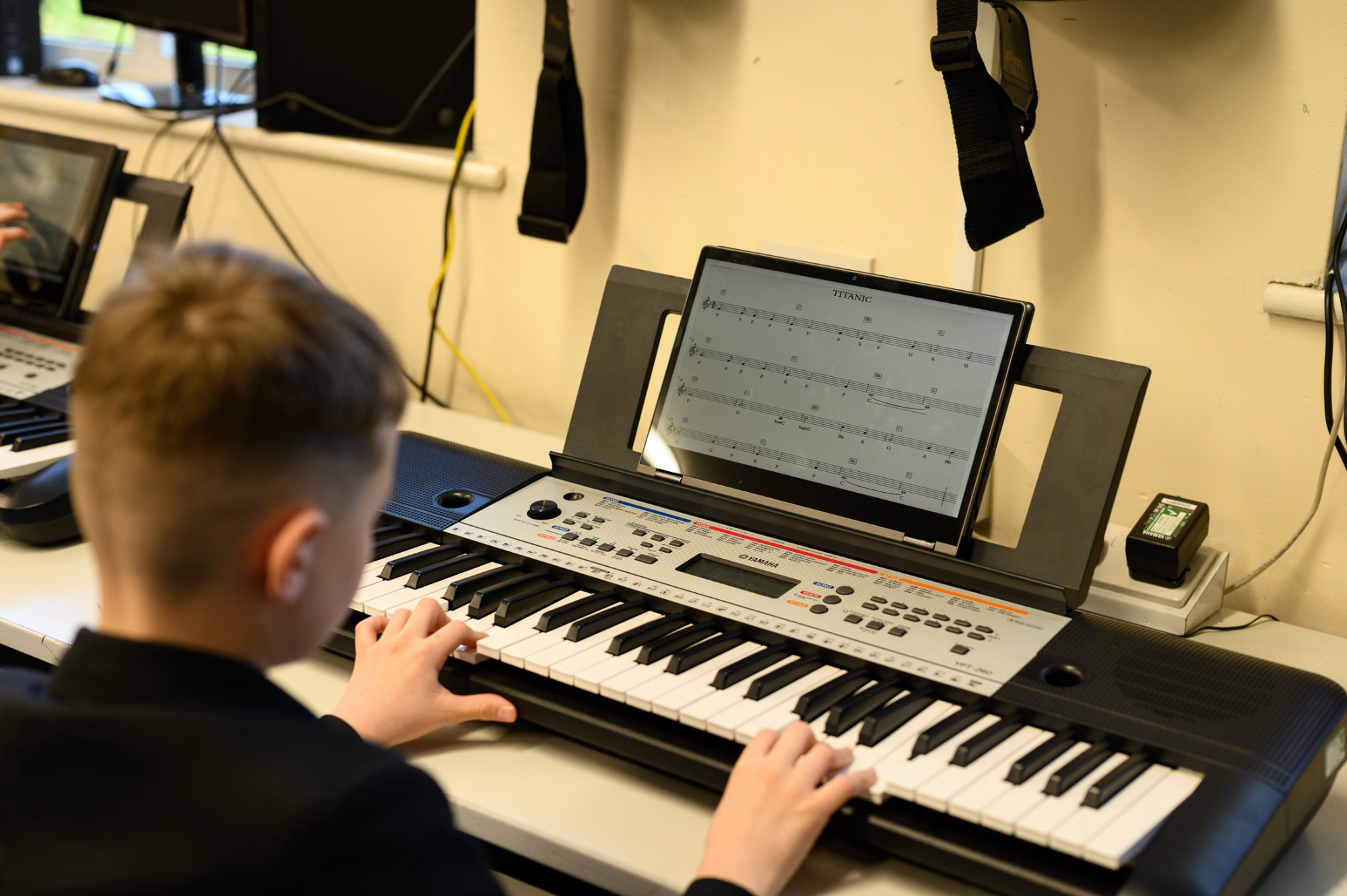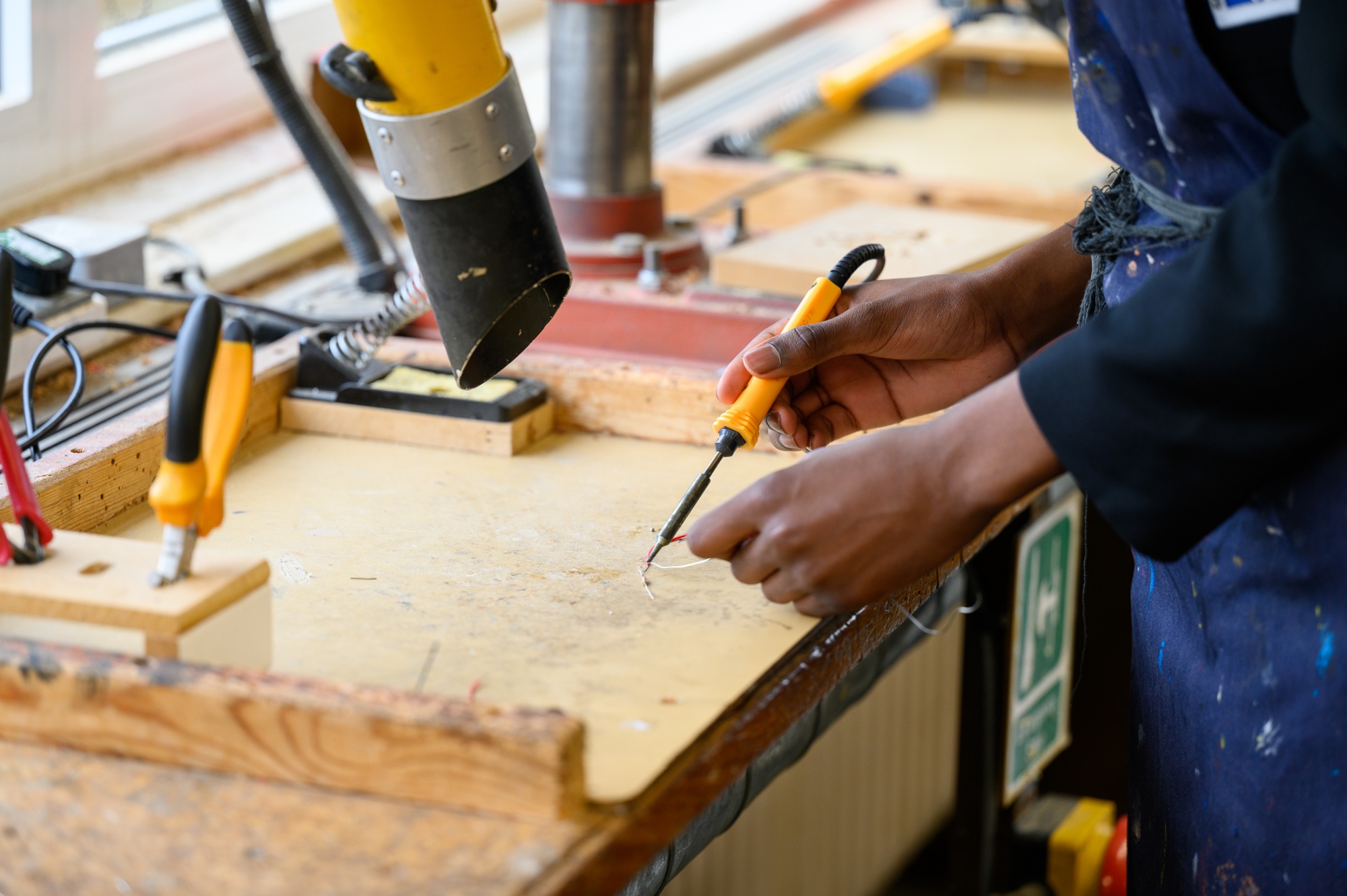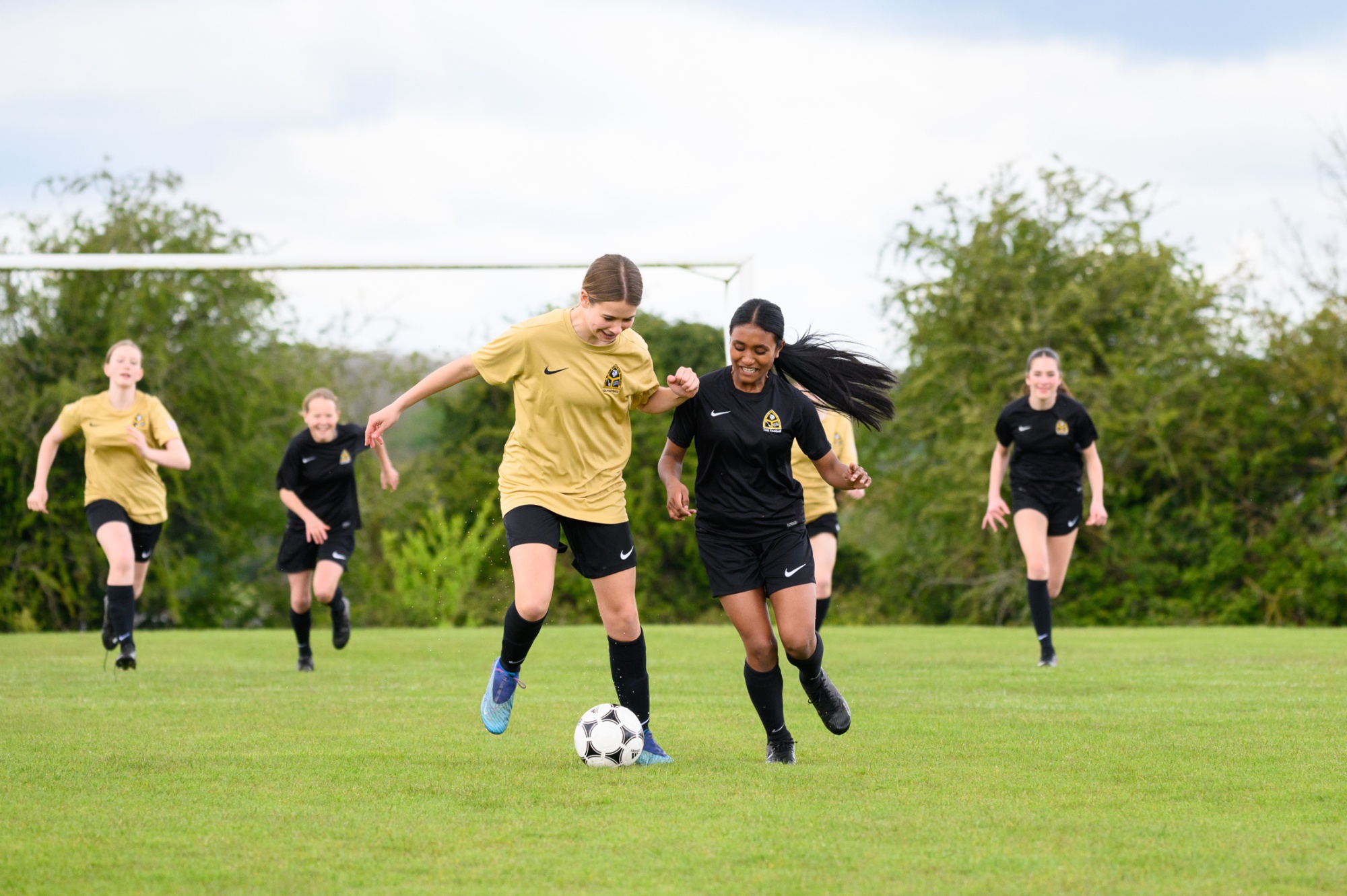Science KS3 | Year 9
Subject Content
Based on the National Curriculum for Science, we strive for our science students to develop deeper thinking and to ask more and more questions about the world around them. Building on the breadth of knowledge from Years 7 and 8, we focus in depth on key topics in order to maximise success for students, with an emphasis on promoting The Cottesloe’s 6Cs.
This is achieved in Year 9 through the study of a range of topics across all three of the Science disciplines as they start to make the transition to GCSE level.
Term One
- Genes 1
- Forces 3
- Environment Project
Term Two
- Biology B1 | Cell Biology
- P3 - The Particle Model of Matter
Term Three
- Chemistry C1 | Atomic Structure and the periodic table
- P1 - Energy
Assessment Details
The assessment plan for Year 9 consists of regular 'Knowledge check' style assessments throughout the year which students will be given notice of via their Google Classroom.
- End of KS3 assessment
- End of year assessment.
All of these assessment types work to inform current grades for students and to identify areas for development.
Additional Equipment Recommended
- Students will need a scientific calculator.
- We have recommended revision guides being available in the school shop.
- Coloured pencils are useful for diagrams.
What can I do to support my child at home?
- Take an interest in the science that students are studying
- Encourage students to practice spellings and learn definitions
- Encourage students to complete the homework and meet deadlines
- We recommend the use of Seneca learning. Encourage students to engage with this regularly and to use it for targeted revision in the preparation for exams
- Take advantage of relevant science institutes to support interest in science. For example, Tring Museum, National Science Museum, Woburn Safari Park, College Lake, Whipsnade Zoo.
- Help students prepare thoroughly for assessments
Recommended Resources for the Course
Websites
Books
- Collins GCSE 9-1 Revision - Grade 9-1 GCSE Combined Science Trilogy Higher AQA All-in-One Complete Revision and Practice ISBN 978-0-00-816086-9
- Collins GCSE 9-1 Revision – Grade 9-1 GCSE Combined Science Trilogy Foundation AQA All-in-One Complete Revision and Practice ISBN 978-0-00-816085-2
Scheme of Learning - Term 1
This contains a breakdown of the topics taught during Term 1 in Year 9 Science (Term 2 and 3 will be KS4 GCSE learning following the AQA Trilogy Science Specification). Each learning episode could take a single lesson or multiple lessons depending on the content and the individual needs of a class.
Students will have access to information about each topic through their Google Classrooms, which parents can access. This will include knowledge organisers, lesson resources, assessment notifications, revision guidance and any other helpful information.
Recall is particularly important in order to be successful in Science, and we recommend that regular engagement with homework will support the long-term retention of scientific knowledge.
If you have any questions regarding the content of the KS3 Science Course, please feel free to contact your child’s class teacher, who will be happy to answer any questions.
Y9 |
Units to be covered in Y9 |
|||
Autumn Term |
Genes 2 |
KS3 |
||
Forces 3 |
||||
SPS |
||||
Spring Term |
B1 |
GCSE Units |
||
P3 |
||||
Summer Term |
C1 |
|||
P1 |
||||
Topic Genes 2: Evolution and Inheritance
|
Learning Episode |
Learning Intentions |
Key Questions |
|
Evolution and creationism |
Explain the origin of creationism |
What is the origin of creationism? |
|
Explain the difference between creationism and evolution |
Why is evolution a "new" idea? |
|
|
Give two differences between creationism and evolution. |
||
|
When was evolution first suggested? |
||
|
Natural selection |
Describe the process of natural selection |
What is the theory of evolution? |
|
What is a fossil? |
||
|
What is variation? |
||
|
Why does variation lead to natural selection? |
||
|
Describe how organisms evolve over time. |
What is the fossil record? |
|
|
How can fossils show us evolution? |
||
|
What is evolution? |
||
|
Charles Darwin |
Describe the process of peer review |
What is meant by Peer review? |
|
Who was Charles Darwin? |
||
|
When did he live? |
||
|
Describe the evidence that Darwin used to develop his theory of natural selection. |
What is he famous for? |
|
|
Where did he travel? |
||
|
Why were his ideas controversial at the time? |
||
|
Extinction |
Describe some factors that may lead to extinction |
What could be the cause of a catastrophic event? |
|
What are the 4 main causes of disease? |
||
|
What would organisms be in competition for? |
||
|
Describe the importance of maintaining biodiversity. |
What are the causes of climate change? |
|
|
What impact does climate change have on planet earth? |
||
|
Competition |
Describe how plant and animal species compete |
What do animals and plants compete for in the wild? |
|
Why do species compete? |
||
|
Give an example of competition. |
||
|
Biodiversity |
Describe biodiversity |
What is Biodiversity? |
|
Explain the importance of maintaining biodiversity. |
What is meant by Captive breeding? |
|
|
Preserving biodiversity |
Describe captive breeding |
What are the names of some organisms that are bred in captivity? |
|
What are the advantages of Captive breeding? |
||
|
Describe how extinction can be prevented. |
What are the disadvantages of Captive breeding? |
|
|
What actions can you take to prevent extinction? |
||
|
Cells review |
Recall structure and function of cells and organelles |
What organelles can be found in both plant and animal cells? |
|
What organelles are only found in plant cells? |
||
|
What is the function of the nucleus? |
||
|
Inheritance |
Describe how characteristics are inherited |
Give an example of a physical characteristic |
|
Is blood type an example of an inherited characteristic? |
||
|
How is eye colour inherited? |
||
|
Describe the relationship between DNA, genes, and chromosomes. |
Put these words in order of size from smallest to largest: Cell, DNA, Chromosome, Gene |
|
|
How many chromosomes in a human cell? |
||
|
What is a gene? |
||
|
Explain how a DNA mutation may affect an organism. |
What is a DNA mutation? |
|
|
If a DNA mutation occurs can a cell survive? |
||
|
DNA |
Describe the structure of DNA |
What does DNA stand for? |
|
What is it made of? |
||
|
What are the names of the four bases? |
||
|
Describe how scientists worked together to discover the structure of DNA. |
What shape is DNA? |
|
|
Who discovered the shape of DNA? |
||
|
Did the scientists win the Nobel Prize for their discovery? |
||
|
DNA extraction practical |
Investigate the size of a DNA molecule |
What are the hazards in this experiment? |
|
Are the results quantitative or qualitative? |
||
|
How could you improve this investigation? |
||
|
Genetics |
Describe the difference between dominant and recessive alleles |
What is an Allele? |
|
What is a Gene? |
||
|
Where are Genes found? |
||
|
Use a Punnett square to show what happens during a genetic cross. |
What does Dominant mean? |
|
|
What does recessive mean? |
||
|
What is a Punnett Square? |
||
|
Genetic modification |
State how a product is produced using genetic modification |
What is meant by genetic modification? |
|
What other term can be used to describe genetic modification? |
||
|
Give an example of genetic modification. |
||
|
Describe some advantages of producing products through genetic modification. |
State an advantage of genetic modification. |
|
|
Compare genetic modification and selective breeding |
||
|
GM debate |
Discuss the advantages and disadvantages of genetic modification. |
State a disadvantage of genetic modification |
|
Evaluate the use of genetic modification |
Would you use GM products? |
Topic Forces 3: Magnetism and Electromagnetism
|
Learning Episode |
Learning Intentions |
Key Questions |
|
How magnets interact |
Describe how magnets interact |
What are the two poles of a magnet called? |
|
What happens when like poles are facing each other? |
||
|
What happens when opposite poles are facing each other? |
||
|
Magnetic Fields |
Describe how to represent magnetic fields. |
Draw a magnetic field around a bar magnet. |
|
Where are the magnetic field lines strongest? |
||
|
What do field lines that are close together show? |
||
|
Earth's magnetic field |
Describe the Earth's magnetic field. |
What is the core of the Earth made of? |
|
Draw the magnetic field lines around the Earth. |
||
|
What phenomenon is produced at the North pole by the magnetic field and solar emissions? |
||
|
Navigation |
Describe how magnets are used for navigation |
What piece of navigation equipment uses a magnet? |
|
How does a magnet help us to navigate? |
||
|
Electromagnets |
Describe how to make an electromagnet |
What is an electromagnet? |
|
What are the 3 components of an electromagnet? |
||
|
Describe how to change the strength of an electromagnet. |
What can you do to the core of an electromagnet to make the magnetic force stronger? |
|
|
What can you do to the coils of wire of an electromagnet to make the magnetic force stronger? |
||
|
What can you do to the current of an electromagnet to make the magnetic force stronger? |
||
|
Making electromagnets |
Investigate changing the strength of an electromagnet |
What is the independent variable in this investigation? |
|
What is the dependent variable in this investigation? |
||
|
What are the control variables in this investigation? |
||
|
Using electromagnets |
Describe some uses of electromagnets |
Give some examples of uses of electromagnets |
|
Mini Project |
Research and present to the class one use of an electromagnet |
How can you research the use of electromagnets? |
|
How can you present your findings? |
||
|
DC & AC |
Review DC & AC from Y8 |
What does AC stand for? |
|
What does DC stand for? |
||
|
What is the difference between AC and DC? |
||
|
Simple Motors |
Describe how a simple motor works |
What needs to happen to make the coil move in a simple motor? |
|
Every half turn of the coil what must happen to the current in order to keep the coil turning? |
||
|
Building a motor |
Describe how to build a simple motor |
What two things are needed to make a simple motor? |
|
What should the coil of wire be able to do in a simple motor? |
||
|
Where should the coil be placed in a simple motor? |
||
|
Uses of simple motors |
Describe some uses of simple motors |
Identify some uses of simple motors. |
Topic SPS (Science Projects and Skills): Health
|
Learning Episode |
Learning Intentions |
Key Questions |
|
What is "health"? |
Describe different measures of our health as an individual |
How is health defined? |
|
Identify 3 ways your health can be measured |
||
|
Explain how individual health is linked to society |
How is health used to assess a society? |
|
|
How does society take responsibility for health in the UK? |
||
|
Medicine over time |
Discuss how the role of a doctor has changed over time |
What does a doctor do? |
|
Have there always been doctors? And if not who healed the sick? |
||
|
Discuss the role of the scientific method and when it was applied to medicine. |
What is the scientific method? |
|
|
What were the 4 humours? |
||
|
Was early medicine using the 4 humours based on the scientific method? Why? |
||
|
How did the scientific method affect the practice of medicine? |
||
|
The heart |
Describe the gross structure of the heart |
What are the 4 chambers of the heart called? |
|
What valves separate the atrium and ventricle? |
||
|
What blood vessel brings blood to the heart from the body? |
||
|
The heart and Vesalius |
Andreas Vesalius - case study |
What area of medicine was Vesalius most interested in? |
|
Where did Vesalius get the human bodies to do his comparisons of anatomy? |
||
|
Which previous anatomist's work did Vesalius improve upon to advance the understanding of the body and the human heart? |
||
|
The circulatory system |
Describe the gross structure of the circulatory system |
What are the 3 different types of blood vessels called? |
|
Humans have two sides to the heart, what two places does the heart pump blood too? |
||
|
What term is used to describe the type of circulatory system which has two loops? |
||
|
Discuss the understanding of the blood in the body before William Harvey |
How did people think blood moved in the body before Harvey? |
|
|
Explain how William Harvey advanced understanding of the circulatory system. |
What did Harvey do to advance our understanding of the circulatory system? |
|
|
What did Harvey's experiments show? |
||
|
What is disease? |
Explain what an infectious disease is. |
What is a disease? |
|
What does infectious mean? |
||
|
Are all diseases infectious? |
||
|
Sara Josephine Baker - case study Typhoid |
How did Dr Baker save lives? |
|
|
Alice Ball - case study leprosy |
How did Alice Ball help sufferers of leprosy? |
|
|
Clinical trials |
James Lind - case study scurvy |
What is a clinical trial? |
|
What causes scurvy? |
||
|
How did Lind reduce scurvy on ships? |
||
|
Explain why clinical trials are important |
Why do we carry out clinical trials? |
|
|
Why do we test new medicines on healthy volunteers first? |
||
|
Non-communicable disease |
Explain how diseases can be non-communicable |
Name some non-communicable diseases. |
|
What causes non-communicable diseases? |
||
|
Frederick Banting - case study - diabetes |
What did Banting discover to treat diabetes? |
|
|
What organ of the body produces insulin? |
||
|
What does insulin do? |
||
|
Development of medicine timeline project |
To create a detailed timeline of the development of medicine over human history to include examples of scientists and diseases. |
How will you present your timeline? |
|
Complete timeline project |
Do you have enough detail about each key individual/event? |
From Term 2 of Y9 GCSE Content is taught. We follow the AQA Separate Science and Combined Science Specifications, links below:
Teaching Staff
Head of Science
Mrs Beatty - lbeatty@cottesloe.bucks.sch.uk Save
Second in Science
Mrs Moore - vmoore@cottesloe.bucks.sch.uk
Teachers of Science
Mr Brockwell - gbrockwell@cottesloe.bucks.sch.uk
Mrs Barnes - jbarnes@cottesloe.bucks.sch.uk
Miss Edwards - jedwards@cottesloe.bucks.sch.uk
Mr Mudarikiri - tmudarikiri@cottesloe.bucks.sch.uk
Mrs Woodburn - kwoodburn@cottesloe.bucks.sch.uk
Mr Caputo - acaputo@cottesloe.bucks.sch.uk
Miss Gamage - cgamage@cottesloe.bucks.sch.uk
Mrs Hooley - chooley@cottesloe.bucks.sch.uk
Mrs Baldwin - lbaldwin@cottesloe.bucks.sch.uk
Mrs Smith - ksmith@cottesloe.bucks.sch.uk
Mr Magill - gmagill@cottesloe.bucks.sch.uk






